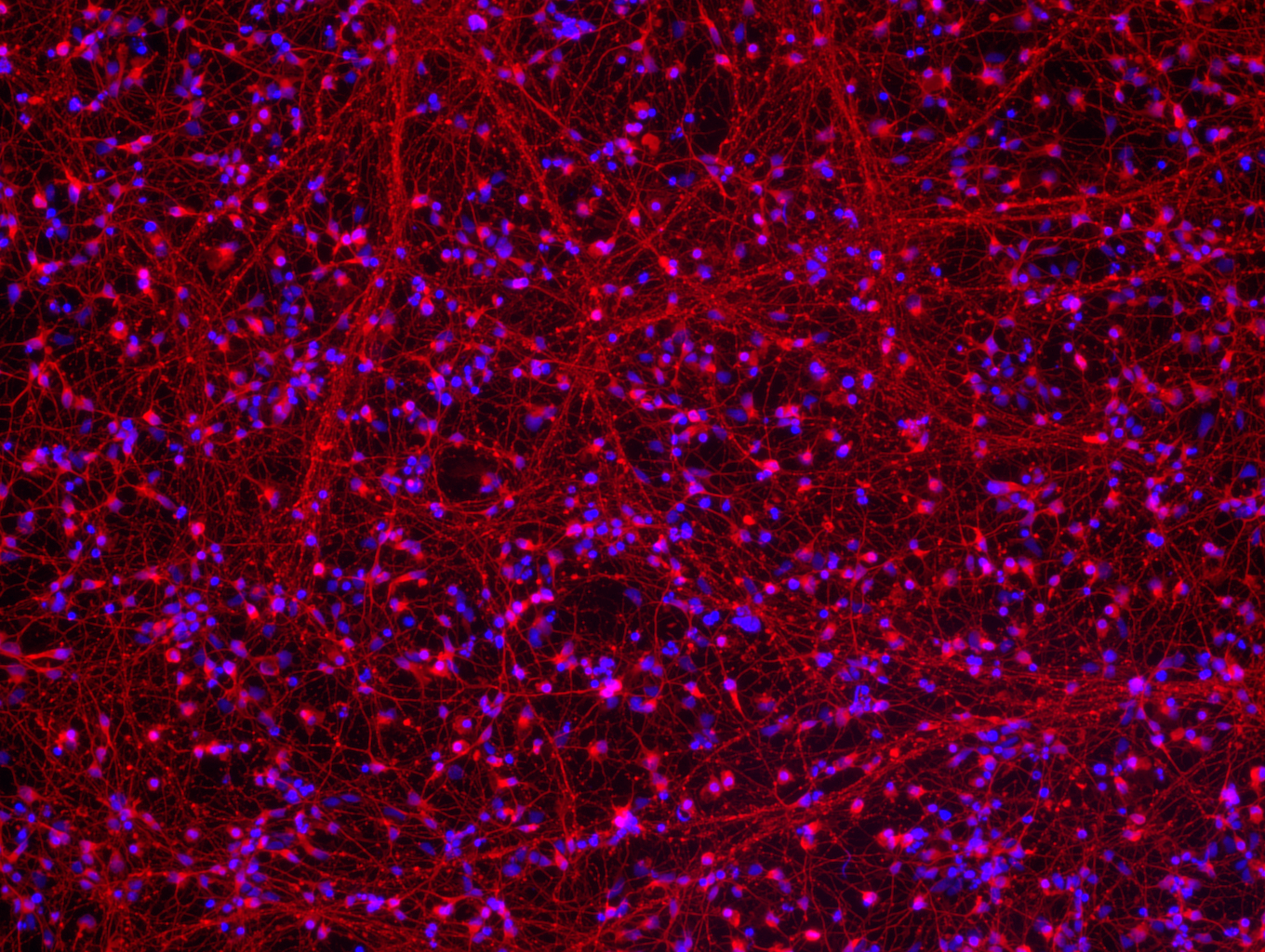Researchers in the CoE-BoC have focused on to the development of human cell-base model of ischemic stroke. This was the first time human induced pluripotent stem cells (hiPSC) were used in publication to model stroke in vitro. The aim was to model ischemic stroke utilizing two different human cell sources, commonly used neuroblastoma cells (SH-SY5Y) and novel hiPSC-neurons. Researchers modeled stroke with oxygen glucose deprivation (OGD) treatment, where the oxygen and glucose are removed from the cells as occurs in ischemic stroke, when blood supply is reduced in the brain. Since neurons have high glucose and oxygen demands, their removal leads to impairment in maintaining normal ionic gradients leading to detrimental effects on the cells. In addition, we wanted to mimic cell therapy for stroke recovery and therefore these models were utilized to study the paracrine effect of human adipose stem cells (ASC) against OGD-induced injury.
Results showed that both cell types responded to OGD treatment with increased cytotoxicity and apoptosis; however, OGD had a stronger effect on SH-SY5Y-neurons compared to hiPSC-neurons. ASC coculture showed neuroprotective effects by decreasing the number of dead cells and increasing proliferation of SH-SY5Y- and hiPSC-neurons. Overall, it is important to note that several cell types should be used in in vitro models to confirm outcomes of the study. In addition, human ASCs could be potential cell source for further studies for stroke targeted therapies.
This groundbreaking work facilitates our next steps in development of more advanced stroke-in-chip and stroke in 3D models in our Centre of Excellence, CoE-BoC (https://research.tuni.fi/coeboc/).
Research was done in collaboration of two research group of Tampere University: Adult Stem Cell Group and NeuroGroup. ASCs used in this study were obtained from international collaborator: Cell Therapy and Engineering Unit, EFS Auvergne Rhône Alpes, France.
The research was funded by Business Finland, Academy of Finland, Competitive State Research Financing of the Expert Responsibility area of Tampere University Hospital, Finnish Cultural Foundation, Päivikki ja Sakari Sohlberg foundation, Tampere University Graduate School for Medicine and Life Sciences and European Union’s H2020 programme (RESSTORE, Regenerative Stem Cell Therapy for Stroke in Europe).
Miia Juntunen, Sanna Hagman, Anaick Moisan, Susanna Narkilahti, Susanna Miettinen, “In Vitro Oxygen-Glucose Deprivation-Induced Stroke Models with Human Neuroblastoma Cell- and Induced Pluripotent Stem Cell-Derived Neurons”, Stem Cells International, vol. 2020, Article ID 8841026, 13 pages, 2020. https://doi.org/10.1155/2020/8841026

